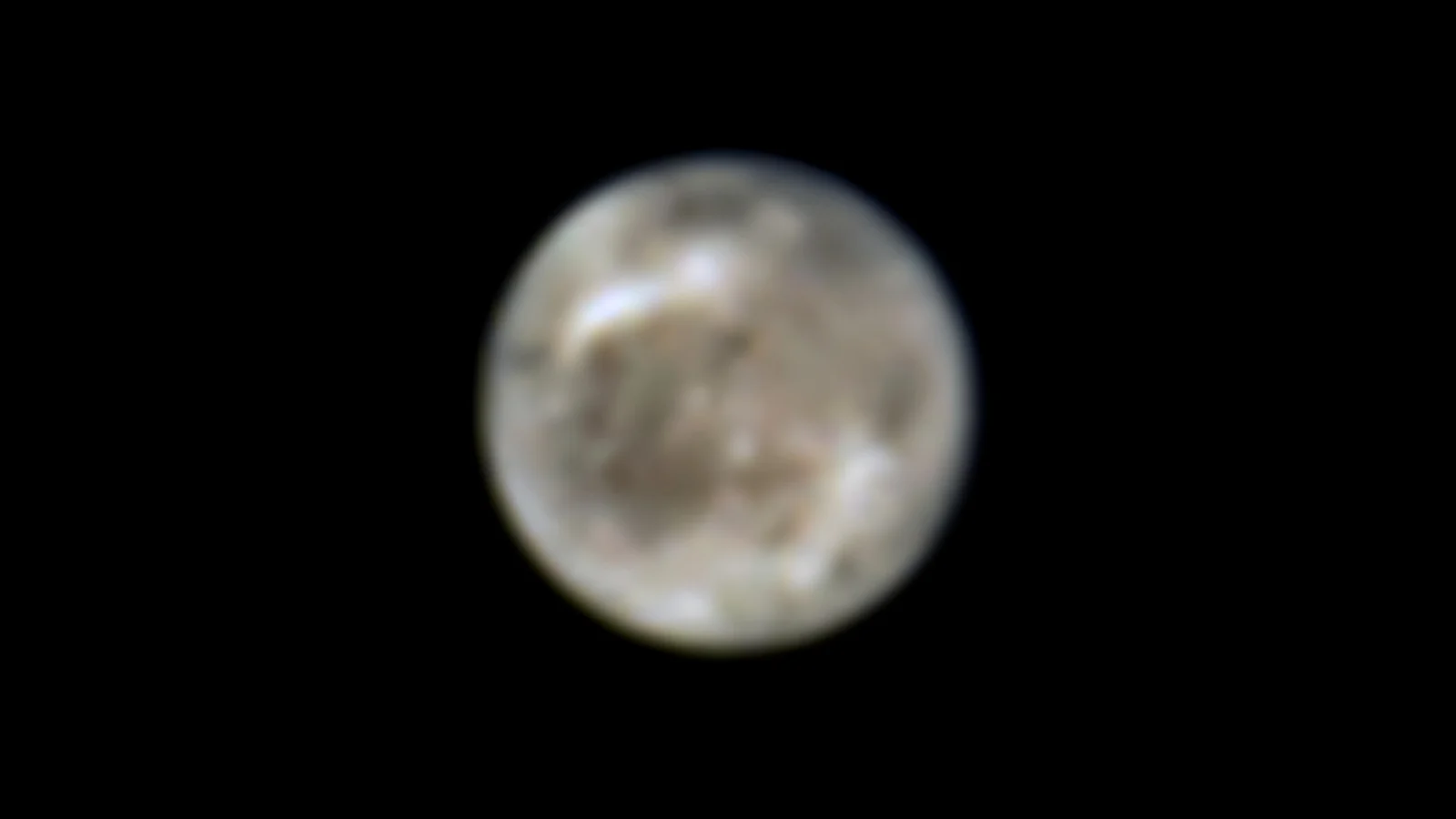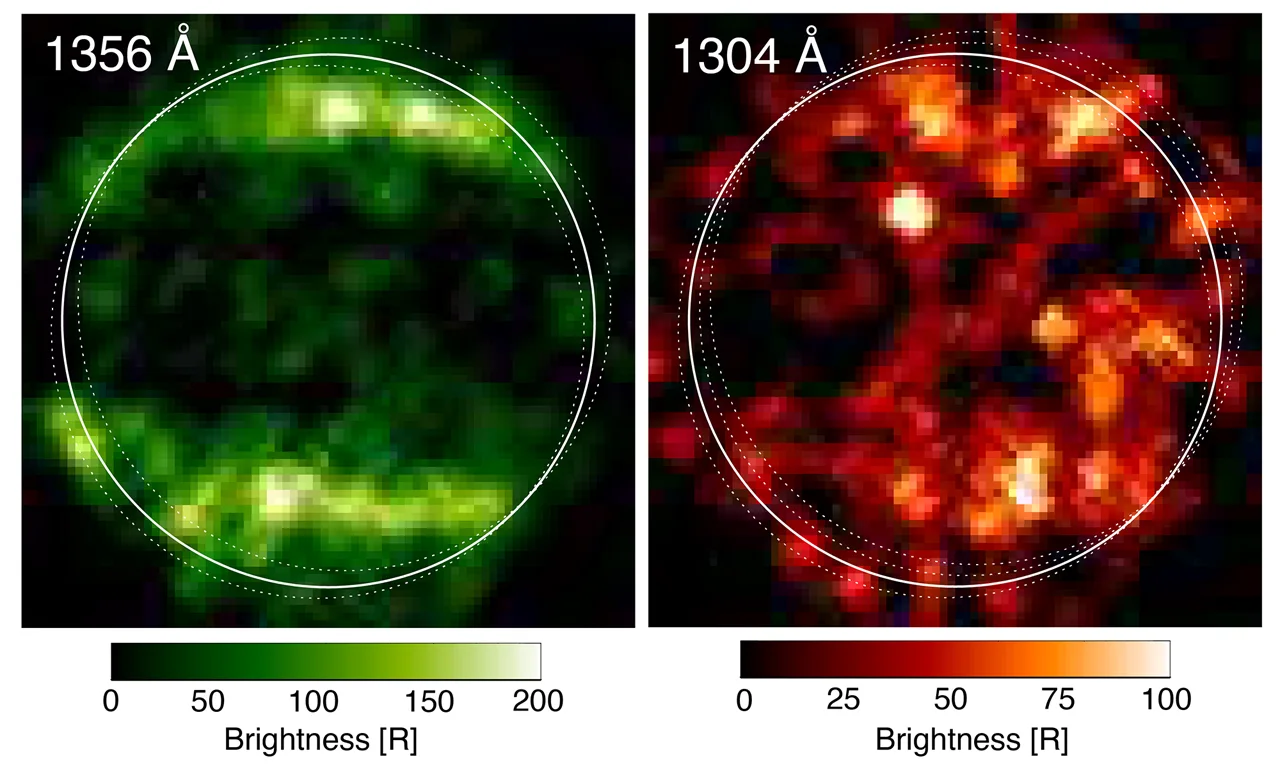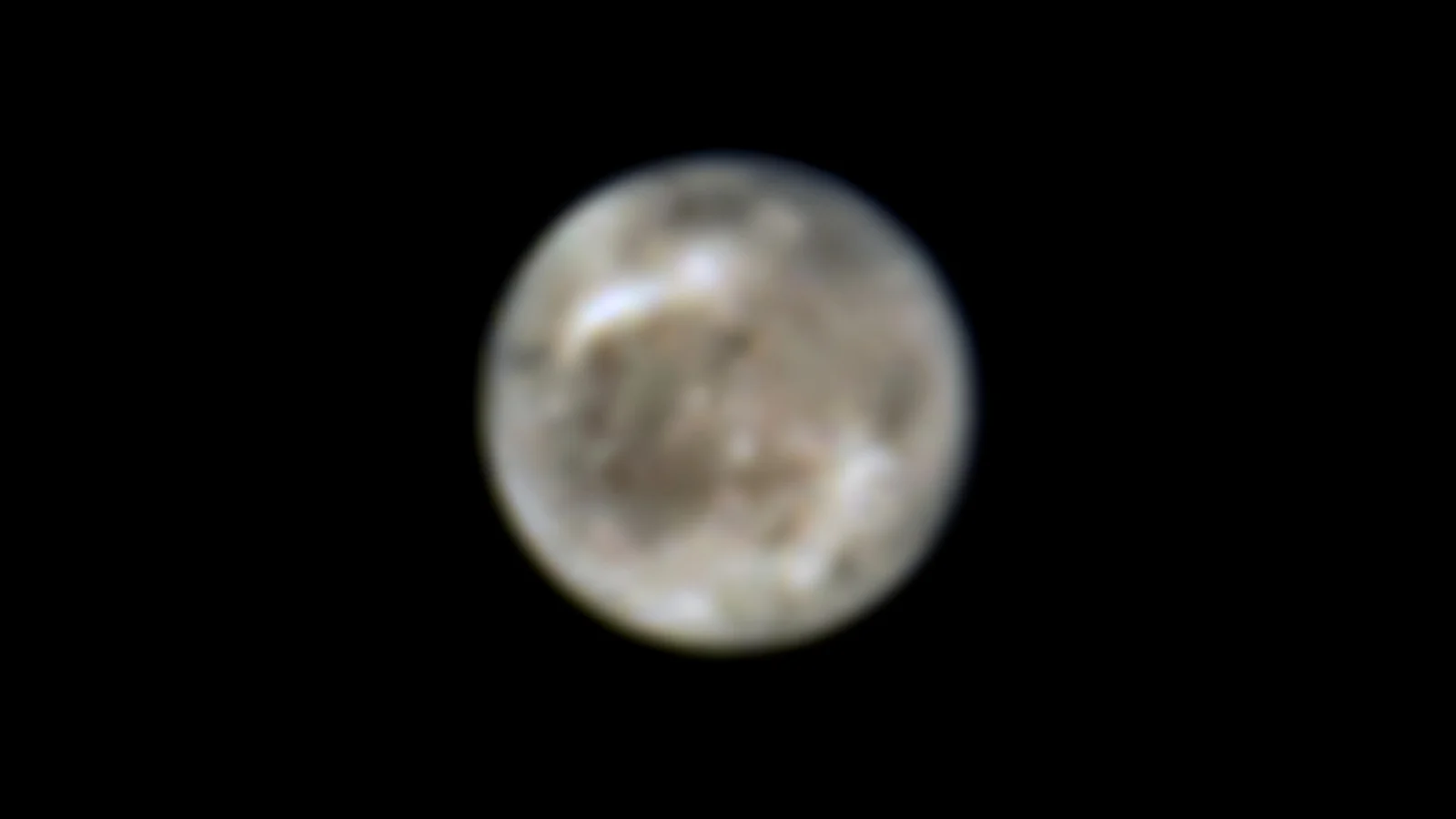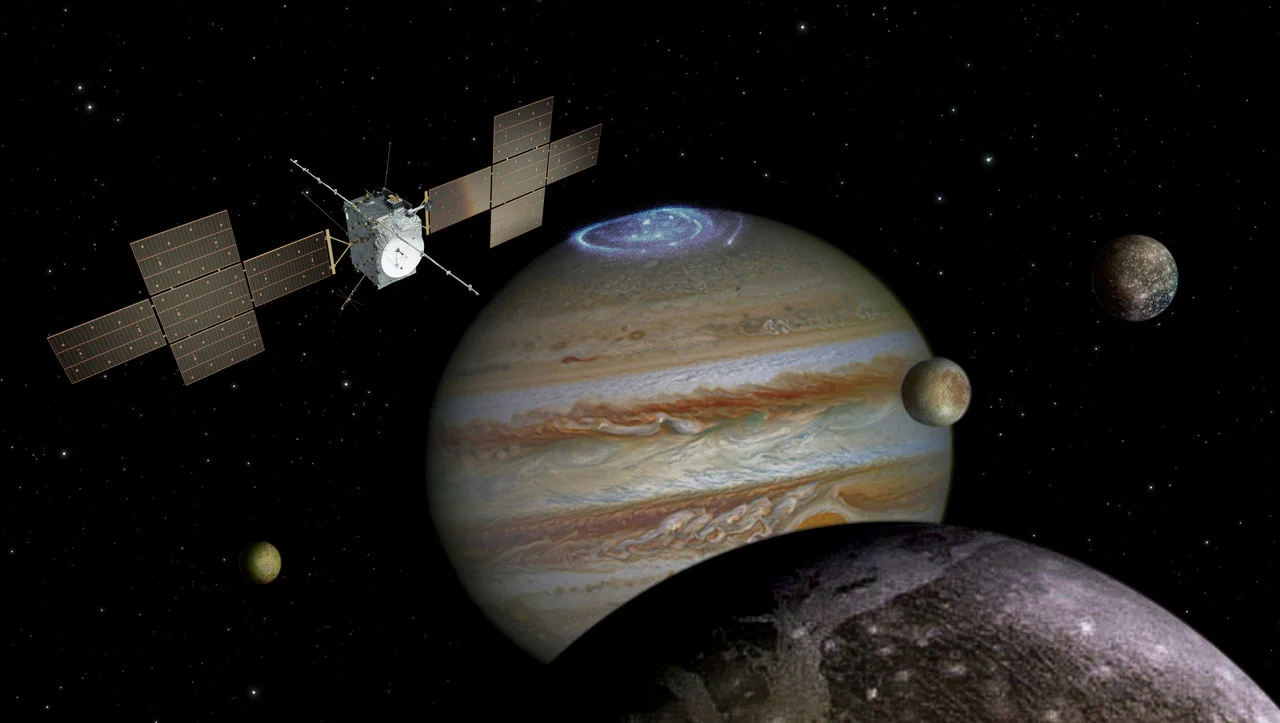
Hubble spotted the first signs of water vapour on Ganymede
Hubble images of Ganymede, some taken over 20 years ago, have revealed the first evidence of water vapour in the giant moon's atmosphere.
Some of the oldest Hubble observations of Ganymede, combined with some of the newest, have led to a remarkable discovery. There appears to be water vapour in the immense moon's thin atmosphere.
Ganymede, the largest moon of the planet Jupiter, is remarkable in several ways. First, it is the largest moon in the entire solar system, bigger than the planet Mercury. Second, it is one of several moons suspected of having a subsurface ocean of liquid saltwater. Third, it is also the only known moon to have its own magnetic field, making it the only moon with auroras.

This artist's concept drawing of Ganymede shows the auroras that NASA's Hubble Space Telescope observed on the moon. Two auroral ovals can be seen, one over each of the northern and southern mid-latitudes. Credits: Illustration: NASA, ESA, and G. Bacon (STScI); Science: NASA, ESA, and J. Saur (University of Cologne, Germany)
The first hints of these auroras were spotted back in 1996. The year before, NASA's Galileo spacecraft made flybys of Ganymede, revealing that it had both an atmosphere and a magnetic field. Intrigued, researchers pointed the Hubble Space Telescope at the giant moon. Using Hubble's Goddard High Resolution Spectrograph (GHRS), they captured bands of ultraviolet light being emitted from above Ganymede's surface around the north and south poles.
Over the years, as Hubble's instruments were upgraded, the telescope has made repeated observations of Ganymede to find out more about these auroras.
In a new study published this week in the journal Nature, an international team of scientists gathered together different observations from 1998 to 2018 and made a remarkable discovery. Ganymede's auroras reveal that the moon's thin atmosphere contains water vapour.

These two ultraviolet views of Ganymede, taken by Hubble's Imaging Spectrograph (STIS) in 1998, capture the moon at wavelengths of 1356 Angstroms (left) and 1304 Angstroms (right). Credit: NASA, ESA, Lorenz Roth (KTH)
When observations of Ganymede were taken in 1998, with the then-newly-installed Space Telescope Imaging Spectrograph (STIS), the auroral bands showed up bright and clear, as shown in the images above.
Like here on Earth, these auroras occur due to high-energy particles striking atoms and molecules in the atmosphere. On Earth, it's mainly nitrogen and oxygen that produce auroras. On Ganymede, it's due to oxygen.
Observing the bands of light near the north and south poles in both images above, researchers attributed those bands to ultraviolet light emitted by molecular oxygen (O2). As for the splotches of light outside of those bands, at the time, researchers thought they were due to the presence of atomic oxygen (O).

Hubble's visible light view of Ganymede taken in 1996. Credit: NASA, ESA, John Spencer (SwRI Boulder)
In this new study, the researchers set out to measure just how much atomic oxygen was in Ganymede's atmosphere. Surprisingly, though, they found almost none.
"So far only the molecular oxygen had been observed," lead author Lorenz Roth of the KTH Royal Institute of Technology in Stockholm, Sweden, said in a Hubble news release. "This is produced when charged particles erode the ice surface."
Instead of simply atomic oxygen, however, the results they saw in the images could have been produced by water molecules (H2O). With each water molecule having a single atom of oxygen in it, they could produce the same results seen in the ultraviolet images.
By comparing the ultraviolet emissions to computer models of Ganymede's atmosphere, the team found they lined up well with icy regions of the surface.
"The water vapour that we measured now originates from ice sublimation caused by the thermal escape of water vapour from warm icy regions," Roth explained.

The newest image of Ganymede, taken by NASA's Juno spacecraft on June 7, 2021. Credit: NASA/JPL-Caltech/SwRI/MSSS
While melted ice forms liquid water here on Earth, the low pressure of Ganymede's atmosphere would cause the water to sublimate — instantly go from solid to vapour — instead.
According to NASA, the ESA's upcoming JUICE mission (JUpiter ICy moons Explorer) will greatly benefit from these findings.
"Ganymede was identified for detailed investigation because it provides a natural laboratory for analysis of the nature, evolution and potential habitability of icy worlds in general, the role it plays within the system of Galilean satellites, and its unique magnetic and plasma interactions with Jupiter and its environment," the space agency said.

This artist's concept drawing depicts the JUICE spacecraft at Jupiter. Image Credit: ESA
"Our results can provide the JUICE instrument teams with valuable information that may be used to refine their observation plans to optimize the use of the spacecraft," added Roth.
JUICE is expected to launch in 2022 and then arrive in the Jovian system in 2029. There, it will make multiple flybys of Europa, Ganymede and Callisto, using its instruments to send back a near continual stream of science about these icy moons. The results should keep researchers busy for decades to come.











